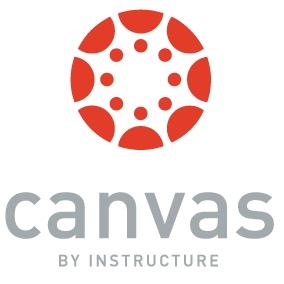Sonoma State University has begun an assessment of the learning management system Canvas as a possible replacement for Moodle.
The assessment is being done with the help of 16 professors across a variety of courses to pilot the system and compare it to Moodle.
Emily Hostutler, a lecturer with the English department and one of the 16 professors piloting Canvas, describes herself as a Moodle “power user.”
“While I appreciate many of Moodle’s features, I was very pleased that the Faculty Center put together such a well-supported pilot for a new learning management system,” Hostutler said. “With so much momentum on campus to innovate and make positive changes, it makes sense to closely evaluate a new platform for our curriculum.”
Hostutler said she understands why third and fourth-year students may have apprehensions of a “system overhaul” so close to their graduation, but her freshman students are very willing to use Canvas.
“My pilot students are energetic freshman who have already used Moodle for the first half of our course in the fall,” Hostutler said. “They were completely willing to be thoughtful ‘testers’ and seem to have transitioned easily to the new learning management system.”
Citing Canvas features like a grade book and phone app, she is proud of the pilot programas it’s been a “really smooth, organized pilot experience,” she said.
Chiara Bacigalupa, the department chair and a early childhood studies professor, said she was impressed by Canvas’ technical support and its ability to give private feedback on student posts in forums. Bacigalupa said she was particularly intrigued by the integrated portfolio feature.
“The portfolio is especially interesting because our department uses a portfolio for program assessment, and we have not been able to find an adequate solution that would be free for students,” Bacigalupa said.
Michael Santos, a professor of economics, has raised concerns that a switch in learning management system could mean more work for students and teachers. Santos said it’s “frivolous” for faculty to want to switch to Canvas due to Moodle’s ability to “deliver course content effectively.”
However, Bacigalupa is optimistic that a switch, if approved, wouldn’t affect the workload of students and professors alike.
“With regards to workload, I know that at least one faculty member in the Canvas pilot was able to import her Moodle course into Canvas, so apparently courses would not necessarily need to be re-constructed from scratch,” Bacigalupa said.
Faculty Center Director Justin Lipp is in charge of managing the Canvas pilot, as well as implementation of any new chosen programs. He comes most recently from UC Berkeley, where he oversaw the transition to Canvas there as well.
“We anticipate no impact to student tuition as a result of this implementation,” Lipp said. “We are actively evaluating all budget planning to ensure that we can appropriately support all educational technology, including the learning management system, using existing resources.”
Citing the four CSU campuses that adopted Canvas in 2016-17 as well as the three that are piloting it with Sonoma State, Lipp said he feels confident the research and feedback being gathered will result in a system that “best aligns with the needs of our student and faculty.
The project team is expected to publish its findings from this research as a method of transparency for the campus community. They can be found at https://lms.sonoma.edu, the official project website.
Professor of Accounting Elizabeth Stanny has published an analysis of Canvas’ financial condition, in which she raises concerns the company’s executives have “no experience in the educational market.” In the report, Stanny said that for every $1 of revenue, Canvas has 63 cents of sales and marketing expense and for every $1 of revenue, the program loses 48 cents.
In risk reports filed with the U.S. Securities and Exchange Commission, Canvas incurred net losses of $110.9 million, $53.0 million, and $41.4 million in 2016, 2015 and 2014, respectively and an accumulated deficit of $196.5 million at Dec. 31, 2016.
Features range from training materials to integration of third-party tools such as Google Apps, which Lipp said would “include the ability to submit Google Docs directly as homework.”
John Sullins, a professor of philosophy, voiced his opinion that while Canvas was slightly easier to use, it’s still a little early to make a decision.
With faculty such as Jordan Rose of the Student Health Center, who plans on writing a formal research paper on his experiences with both programs, the school community should expect to hear much more in the coming months on the topic.





![[Both photos courtesy of sonoma.edu]
Ming-Ting Mike Lee stepped in as the new SSU president following Sakakis resignation in July 2022](https://sonomastatestar.com/wp-content/uploads/2024/04/CC4520AB-22A7-41B2-9F6F-2A2D5F76A28C-1200x1200.jpeg)


























